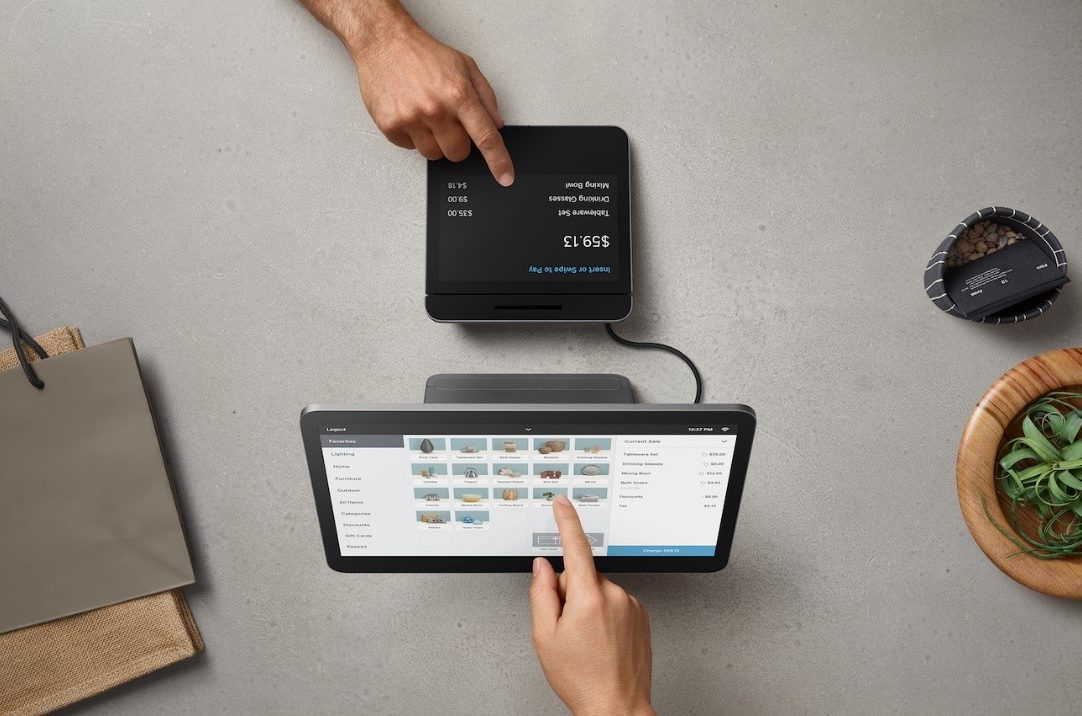The Success Story of Square: How They Had Reimagined Payments?

The global payments industry is a $100 trillion plus market. And the financial technology, also known as fintech, applications revolution is quickly changing the way traditional banks, credit-card issuers and mobile-payments companies work with businesses as well as their retail customers. Therefore, over the long term, Square with their payments technology is regarded as a disruptive force in the sector.
Talking about this company, Square is a provider of hard and software, enabling small merchant businesses to accept card payments. The company was founded in 2009 by, among others, Jack Dorsey who still runs the company to this day. Based in San Francisco, the company has been part of Silicon Valley, reaching billion-dollar status in 2011, and going public in an IPO in 2015. The company’s signature product is a tiny square-shaped payment card reader. The device can be plugged into smart phones or tablet computers and allows for credit or debit card payments. The company also produces a larger payment ‘terminal’ which basically does the same thing as the smart phone-plug device, and an app/software solution that runs the hardware.
Square reached notoriety among industry insiders and the interested public for its rocky valuation road: within a matter of three short years, the company saw its valuation double and get slashed again by 50% at the IPO. Although SQ started as a payments company, in recent quarters it has introduced a range of software, hardware and apps to service small businesses and individual clients. The company has also sought to act more like a traditional bank.
With the advantages of strong brand equity and first mover, which enables Square to expand further internationally. Square is expected to benefit from the continuing increase of cashless payment penetration in United States. This company is well position to capture the unmet needs for Small and median enterprises through value and services beyond payment. In the future, Square could ride on the continuous ecommerce growth to further tap into online payment.
Square and the Market It Operates In
Now, let’s get a grip on this by starting with what Square does, and where it operates. Square operates in the market for card payments in retail transactions. Within the market for card payments, comprised of several different value-chain-players, Square is a so-called ‘Point-of-Sale’ payment systems provider. It is basically the market for products that make sure that money is transferred to the merchant’s account whenever customers make a purchase with their cards. These ‘card-readers’ are part of a long value chain of products and services that make these payment transactions happen.
You probably know Square as the little white reader that lets you accept payments anywhere. It all starts with their Point of Sale app. The Point of Sale app is simple, powerful and highly customizable. It works in all kinds of setups, including Square’s beautiful hardware, but right now, let’s focus on the apps. First off, you can name and organize your products and you can take pictures of them for faster checkout and less employee training. Which means you or your employees can easily take a payment for, say, a pizza. Just tap the item, add some toppings, then bingo -you’re ready for them to swipe, dip or tap. A tip window pops up, customers can then sign and you’re all set. It works perfectly, whether you’re selling clothes, coffee or cradles.

But the point of sale app does more than just take orders. It lets you add employees so they can clock in and out and give them secure permissions to keep control of what they can see and do. You can also create and manage your customer directory, right in the app. You can keep a card on file for regulars, which is great for recurring charges. And through digital receipts, your customers can send you feedback directly, which shows up right in your Dashboard. Dashboard is a free resource from Square that’s built to help you make better business decisions. When you open it up, you’ll see this main page with high level metrics, and then you can click to see your sales summary, best-selling items, and over here, a comparison to previous performance. With real time information, you can keep track of your business constantly from anywhere.
You can access your Dashboard with the mobile app, whether you’re at another location, or a beach vacation. You can manage multiple locations all from the same app. You can click here to see sales from different locations and see which employees have sold what. You can also integrate 3rd party software seamlessly through Square Dashboard. You can sync with apps for bookkeeping, tax prep, e-commerce and more. All to help you save time, work smarter and make more. With the Point of Sale and Dashboard apps, it’s easy to get started, train employees, and manage items, inventory and locations – all through your Square account.
The Square Revenue and Business Model

After understanding the market Square operates in, and where it is positioned in the value chain of this fintech industry. The question is now: how does its business model work? How do they make revenues, where do they incur costs? Answering these questions is highly relevant for the valuation.
Square advertises on its website that from a $100 payment made by swiping a payment card through the Square card reader, the merchant receives $97.25 in her bank account about three or four days after the purchase, directly from Square. Square has two different pricing schemes: there are no flat fees, the app and card reading devices are free, and there are two fixed fees: either a 2.75% fee for every card “swipe”, or a 3.5% fee plus a fixed 15 cents for every manual transaction. Both fees are percentages off the total transaction value. This rather simple fee model is also part of Square’s advertising: the ease of use of its products, and transparent pricing.

Using this model, Square mainly aims at SMBs who want to offer card payment services to their clients without steep set-up costs for the systems or in transparent, and perhaps costly pricing. However, even though Square advertises the fixed charge model as ‘transparent’ and cheaper than other service providers, charging a fixed or floating percentage off payments is common practice in this industry. To make a card payment work the way described in the part above, the various payment processors all charge fees off the transacted amount. Mainly, there are two types of fees: a so-called ‘interchange fee’, and a ‘merchant discount’. The interchange fee is paid from the acquirer to the card issuer and is set at about 1.5-2% off the transaction amount. The issuing bank would automatically deduct the interchange fee from the amount it pays out to the acquirer. Both fees can be subject to very complex and varying pricing schemes, depending on the type of card, network and regional jurisdiction.
This is good news for the company and its investors. Disregarding operating expenses, the company has a sustainable core business model with a positive profit margin. More and more people use Square to swipe their cards, benefiting Square’s business.
And, Square had entered a contract with Starbucks, under which Starbucks would use Square terminals in its U.S. branches. Since Starbucks is such an important client –Square reports both Starbucks revenues and transactions costs separately from other revenues. However, and this is a big however, Starbucks terminated their contract with Square shortly before the IPO. Additionally, Starbucks stated that they would completely abandon Square technology and switch to another operator. This means that going forward, all business model (and financial) projections must be made without Starbuck’s revenues and costs. This is striking, as Starbucks was responsible for roughly 10% of Square’s core business revenues.
The Reasons behind Square’s Success
But after all, card payments have been around for a long time, and so have card readers as well as all the hard- and software that goes with them. Granted, the market currently undergoes various kinds of evolutions, brought along by new payment methods such as Apple Pay or Contactless Cards. Also granted, Square is embracing this technological change. Starting out with card readers for magnetic strip cards only, Square’s products now work with contactless- and chip-cards and support new technology like Apple Pay.

Especially because Square is neither the first nor the only company in this market with this type of product. These same companies such as PayPal charge very similar fees, too. So, there is no real price differentiation for Square, either. And what about its economic relevance? So, competition is stiff, the market is small, the product not unique or new, then what is it about this company?
So, the question you may ask is what is the true ‘intrinsic’ value of the company, if there is such a thing, and why did the implied values differ so much over time?
#1. Expanding the Square Ecosystem

While Square appeared to be in trouble after going public, the company plowed ahead—solving problems, increasing revenue, and continuing to grow steadily. More than 1 million people and businesses use Square to process credit cards in US. With the higher and higher percentages of mobile payment penetration in US, Square can expand their business. The key drivers are the high levels adoption of smartphones and increase level of convenience, more discount and promotional incentives to consumers and the increasing the number of online retailers.
The market is likely to continue to grow at strong rates, especially given the latest inventions in the market, such as Apple Pay or Contactless Cards. The growth will surely decline to levels more in line with general economic growth. But for the foreseeable future (the next 10 years) I go with McKinsey’s suggestions of an average annual growth rate of 7% in the U.S. The market will therefore have a volume of $9.3 trillion in 2025. The fact that this growth is a bit lower in the U.S. than in international 17 markets seems to make sense, too. Among all markets, the U.S. is probably among the more advanced markets when it comes to card payments, so upside potential is perhaps more limited than in other markets.
#2. Easy and Fast Processing
Basically, Jack Dorsey—CEO of Square and co-founder of Twitter—created an application that is mobile, easy to use. With Square, you can often get paid the next day. And each transaction takes less time than waiting for approval and printing a receipt.

At the most basic level, Square is awesome because it’s new. It’s different. Easy to use and smarter than a cash register, Square has won over small business owners. It also brings credit cards to merchants who might never have accepted them before. And customers buy into the gimmick. Also useful for shoppers is Card Case, a part of the system that tracks buying habits – something some shoppers might appreciate.
#3. Right Positioning in the Fintech Market

Square has reinvented the cash register. By 2013, Dorsey and his team realized that Square had significant commercial potential beyond its mobile Reader product. During this period, Square expanded up-market, targeting larger businesses with higher ACVs by building out its product to become a dedicated point-of-sale system and making strategic acquisitions. By making sending and receiving money between two people as fast and frictionless as possible, Square was further solidifying its brand as a “social” payments experience.
Square is most visibly positioned to use a bank license with its business customers, but the company has also been building more bank like services for consumers, most notably with its app Square Cash. Square Cash is often described as a competitor and imitator of Venmo, the popular app owned by PayPal that makes it possible for friends to send one another payments by smartphone. In recent months, though, Square Cash has quietly bypassed Venmo to become the most frequently downloaded financial app of any kind on both Apple and Android phones, according to Apptopia.
#4. Focus on Customers Experience
The high valuation of Square Inc may be justified given the company’s customer-oriented initiatives. Square’s been slowly rolling out its physical Square Cash Cards to users. Square CEO Jack Dorsey announced that, anyone can get one of the prepaid debit cards through the Square app or website. It’s not just eases of use for consumers that’s driving strong growth for Square, though. The company is also thinking about what its small business customers struggle with daily, coming up with solutions. The common element of Square’s innovations are they all either mobile minded, allow for automation, or both. The Square Cash Card more closely resembles a prepaid card than a debit card, since it’s only able to draw on funds in your Square Cash account and not your bank. The big difference is it serves to use your Square Cash funds in stores, instead of having to transfer out funds to a regular debit card or hope that your retailer supports Apple Pay to use these types of virtual cards.

It’s a very 21st-century kind of thing, even if most onlookers don’t realize it. Indeed, the average consumer has almost forgotten there was a time not that long ago when smartphones didn’t exist. There was a time not much longer before that when e-commerce wasn’t a thing. A great deal of work was done manually then, and little was offered in the way of real-time cash management.
The Bottom Line
For one, you get to witness a prime example of a Startup company growing into a market on the back of various venture capital funding rounds and an IPO. And you can also learn how difficult it is to derive a ‘true’ intrinsic value of a young or growth company at the onset of or during its growth period.
Square not only solved a lasting problem for millions of businesses worldwide but did so in a way that forced the mainstream financial sector to reevaluate what consumers want from financial products in today’s business environment. This company was smart to focus on how their products affected the overall experience but was careful to avoid developing a reputation for style over substance.








